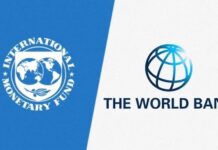The Gu’ harvest is expected to be 50 per cent below average this year. In June, the Humanitarian Community and Somali Federal Government launched the Somalia 2019 Drought Impact Response Plan (DIRP). The plan appeals for US$ 686 million to aid communities affected by the delayed Gu rains from June to December 2019. The plan will target 4.5 million affected people.
· As part of the drought response, UNICEF continued to supply water through water trucking reaching 141,441 people, and 4,230 people also received improved access to emergency sanitation, while 69,174 people received hygiene kits.
· UNICEF provided 4,220 people with psychosocial support. 467 separated and 366 unaccompanied children were identified and documented. 2,539 people benefitted from mine risk awareness and 192 people accessed to Gender-Based Violence survivor services.
· UNICEF is facing a 62 per cent funding gap and remains constrained in how it can scale-up to meet the growing needs of children throughout Somalia.
Situation Overview and Humanitarian Needs
Children in Somalia continue to live in one of the harshest places in the world to be a child, faced with repeated climate shocks, continued conflict, displacement and violence. As of January 2019, over 4.2 million people, including 2.5 million children, needed humanitarian assistance and protection.2 By December 2018, over three million children, out of 4.9 million in the country, were estimated to be out of school,3 including 1.85 million school aged children who require urgent assistance. In general, the enrolment rate is 30 per cent across Somalia, and for primary school the enrolment is the same for boys and girls. There are also an estimated 2.6 million people displaced in Somalia, including over one million in the last year alone,4 with women and children representing the majority of the displaced.
According to the released OCHA Humanitarian Bulletin, June 2019, Gu’ harvest expected to be 50 per cent below average.
On top of that, the 2018 Deyr season was below average to poor in many parts of Somalia. As a result, the northeast and central regions of Somalia were impacted with significantly drier and higher than normal temperatures.5 The dry conditions continued in 2019 with the Gu rains starting late in most of the country resulting in the overall humanitarian situation worsening. Displacements due to the delayed rains and the impact of conflict are reported to be increasing throughout the country and exclusion and discrimination of women and girls, as well as socially marginalized groups, continue to exacerbate elevated levels of acute humanitarian needs. Rains have materialized in most parts of the country in May, but the impact of the delay will likely continue through the year and a sufficient harvest season is highly unlikely. The 2019 Gu season was the second consecutive below-average rainy season, in a country still recovering from a prolonged drought in 2016-17.6 In June, the Humanitarian Community and Somali Federal Government revised the launched Somalia 2019 Drought Impact Response Plan (DIRP) 4 in May 2019. The final plan appeals US$ 686 million to aid communities by the delayed Gu rains throughout the country from June to December 2019. The plan will target 4.5 million affected people. The plan is multi sectoral and it includes critical nutrition, health and WASH interventions, and highlights the full scope of needs for children.
The impact of the delayed rains is expected to increase vulnerabilities and displacement for those most in need and translate into heightened child protection risks and loss of opportunities for learning for children.




